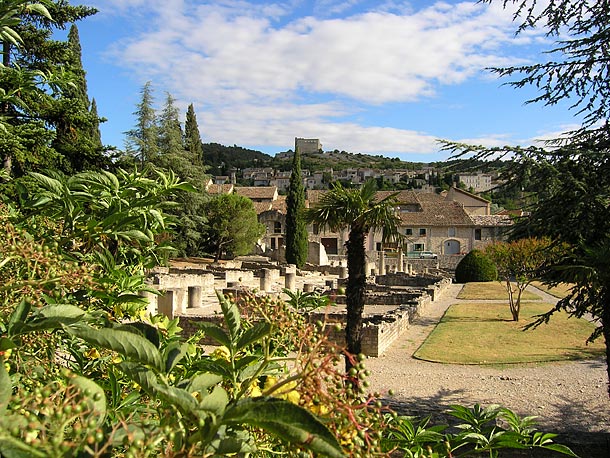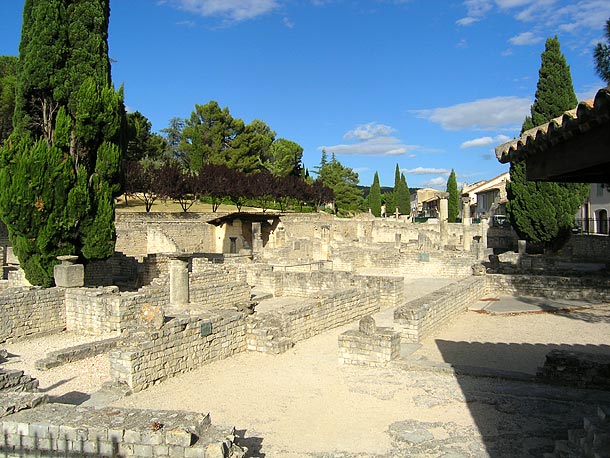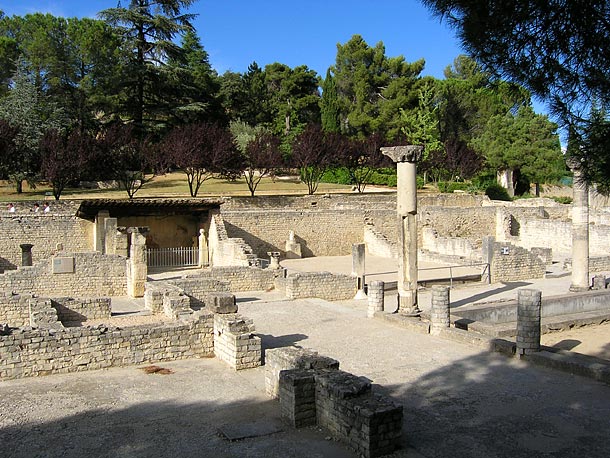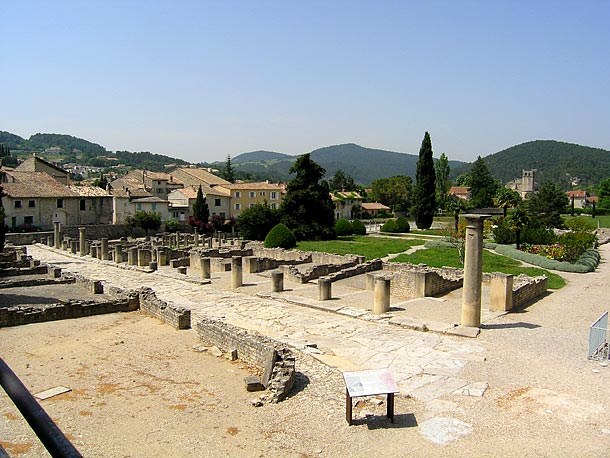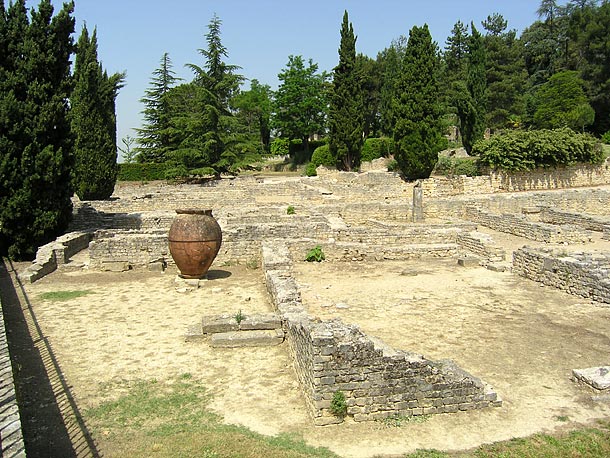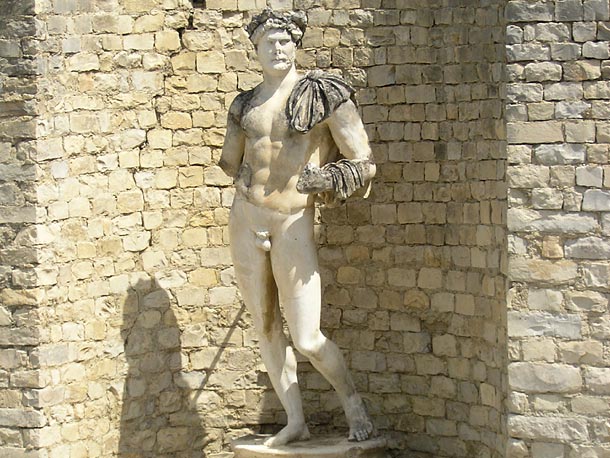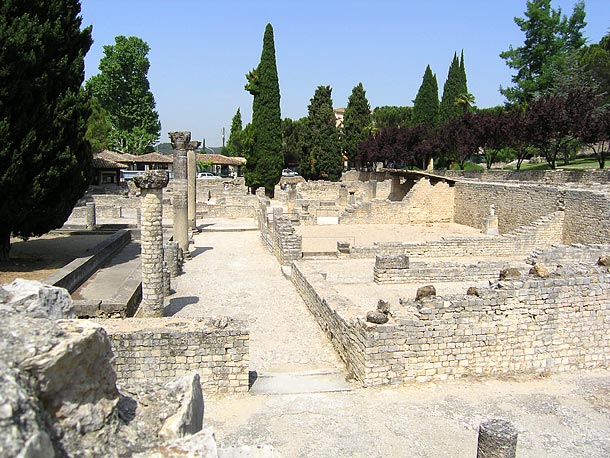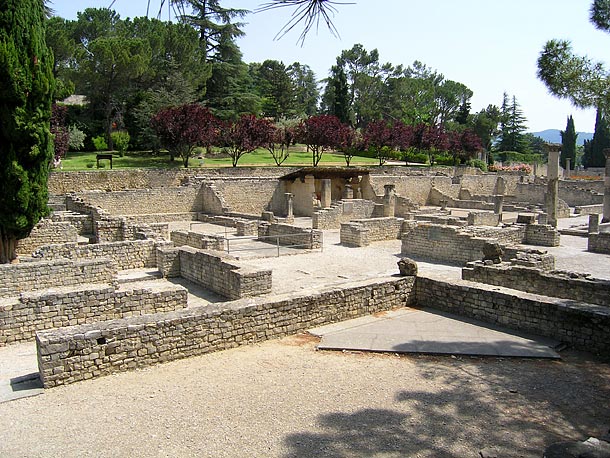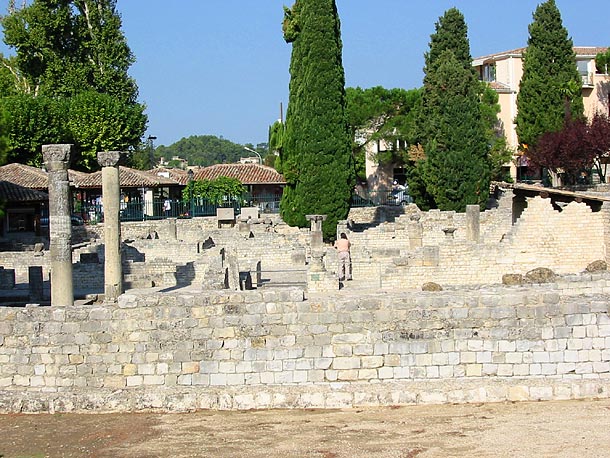Sites to be visited
Vaison-la-RomaineBuilt on the banks of the river Ouvèze, Vaison is at the cross-roads which leads to thearble statues representing three emperors - Claudius (41-54 AD) with his civic crown made of oak leaves; Domitien (81-96AD), a war chief who played a very important role during the wine crises and Hadrian (117-138 AD), an idealised hero, with his Greek philosopher"s beard, his imperial prince"s coat, and a laurel wreath on his head. DigsThe archaeological remains which can be seen today date from the first and second centuries AD. From the remains of the large public buildings which have been conserved, we can estimate that the city covered about 60-70 hectares. A theatre was cut out of the rocks of Puymin hill (I-II century) and could seat between 5 and 6 thousand spectators. Today this theatre has become a magnificent site where the annual Summer Festival is held. |
Archaeological MuseumOn the southern side of the Puymin hill can be seen objects and inscriptions which have been found on the site, and from which we can understand the life of the people of those bygone days. The most interesting relics are the large m of Good Taste. Presentation of the new wine, Christmas traditions and exhibition of santons, lively activity in the cellars and the streets. |
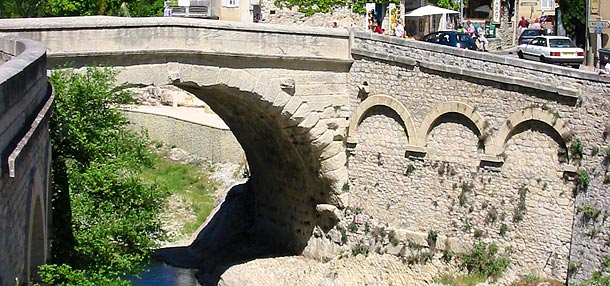 |
The Roman bridge
|
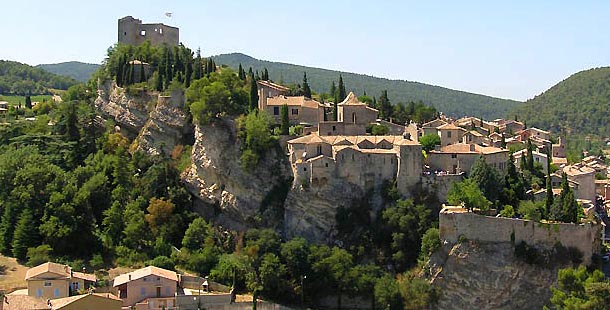 |
The old townThe old town is a charming place of narrow, cobble-stoned streets interspersed with small squares and old fountains of the 18th century. One can find many art galleries, small cafés and restaurants of character. |
CastelThe chateau built by the Comtes de Toulouse dates from the twelfth century. |
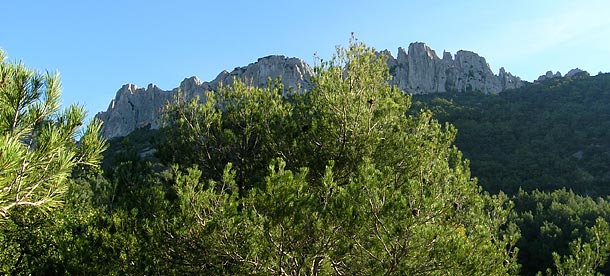 |
Les Dentelles de MontmirailThe Dentelles de Montmirail are chalk cliffs, very popular with rock climers. At the top there is a fine view stretching from Mont Ventoux to the Rhône. |
A brief history Two thousand years ago, Vaison-la-Romaine was called Vasio Vocontiorum, "the Vase of the Voconces" . This name was eventually shortened to Vaison, and only in 1923 to Vaison-la-Romaine. |
